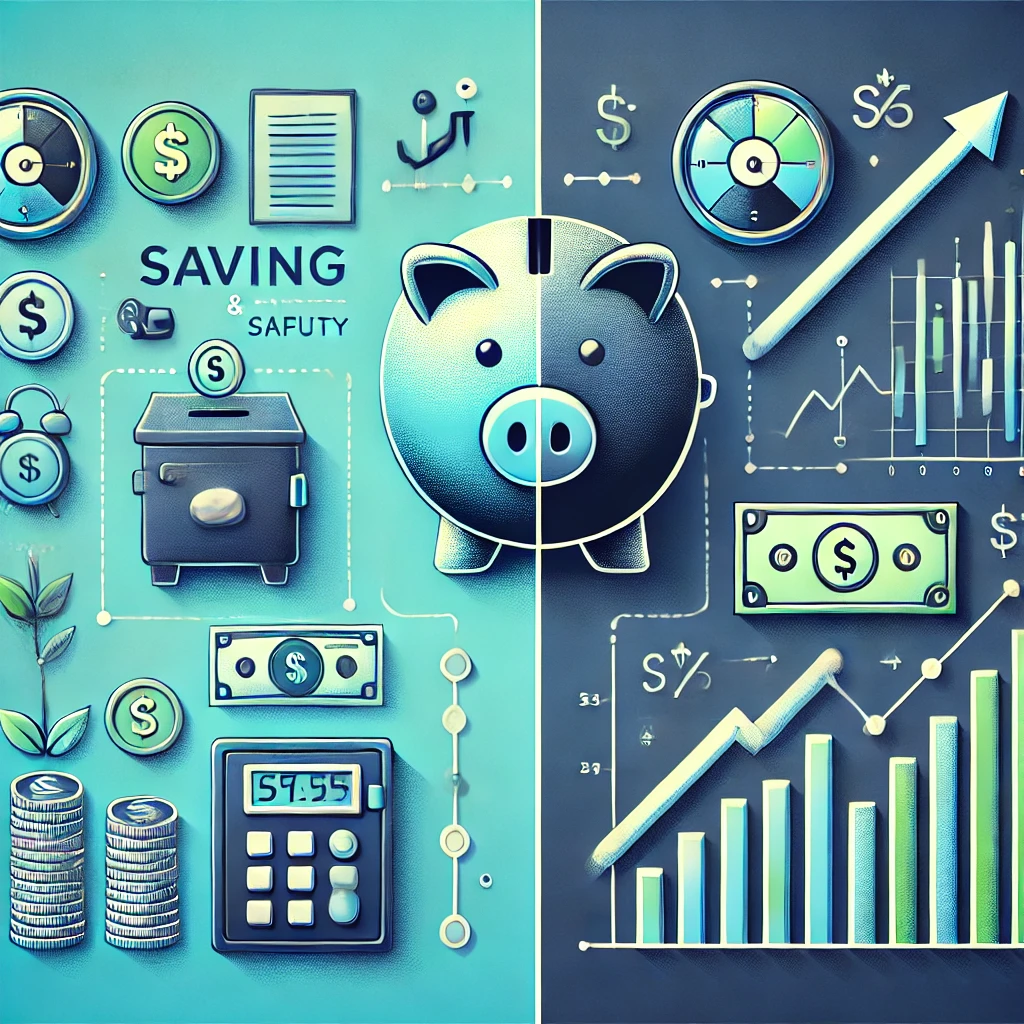Saving vs. Investing: What’s the Right Strategy for 2025?
Saving and investment
Introduction
Saving and investing are two essential pillars of financial planning, but they serve different purposes. Saving involves setting aside money in a secure place, like a savings account, to cover short-term needs or emergencies. Investing, on the other hand, is about putting your money to work in assets like stocks, bonds, or real estate to grow wealth over time. While saving offers safety and quick access to funds, investing provides higher returns but comes with risks. Understanding when to save and when to invest is key to building a solid financial future.
What is Saving?
Saving is setting aside money for short-term needs or emergencies. You usually keep this money in a safe place, like a savings account or a money market account.
Why Save?
Low risk: your money is safe and doesn’t lose value suddenly.
Easy access :You can quickly withdraw your savings when needed.
Best for short-term goals: Like a vacation or an emergency fund.
Downsides of Saving
Low returns: The interest you earn is small.
Inflation: Over time, inflation can reduce the value of your money.

What is Investing?
Investing means putting your money into assets like stocks, bonds, or real estate to grow it over time. Investments carry risks but offer higher rewards compared to savings.
Why invest?
Higher returns: Your money has the potential to grow significantly.
Beats inflation: Investments can outpace rising prices.
Best for long-term goals: Like retirement or buying a house.
Downsides of Investing
Risk of loss: Investments can lose value if markets drop.
Takes time: It’s not ideal for quick access to cash.

Saving vs. Investing: Key Differences
How to Choose the Right Strategy for 2025
1. Think About Your Goals
If your goal is short-term (e.g., an emergency fund or vacation), saving is the better option.
If you’re planning for long-term goals (e.g., retirement), investing is the way to go.
2. Know Your Risk Tolerance
Are you okay with the idea of losing money temporarily for higher returns? If yes, invest.
If you want your money to be safe, stick to saving.
3. Understand the Economy in 2025
The last year In 2024, inflation and interest rates are important factors. Saving is good for stability, but investing helps you grow wealth in the long run.

How to Balance Saving and Investing
You don’t have to choose one over the other. Here’s how to do both:
1. Start with an Emergency FundSave at least 3–6 months’ worth of living expenses before investing.
2. Invest What You Can Afford to Lose Use extra money for investments, not the cash you need for daily expenses.
3. Diversify Your Investments Don’t put all your money in one place. Try a mix of stocks, bonds, and other assets.
4. Use Financial Apps Apps like Mint or Acorns can help you save and invest smartly.
Mistakes to Avoid in 2025
Relying only on saving: You may miss out on higher returns from investments.
Skipping an emergency fund: Investments aren’t always easy to access.
Not considering inflation: Money in savings loses value over time if it doesn’t grow.
Conclusion
In 2025,the best strategy isn’t saving or investing—it’s balancing both. Save for your short-term needs and emergencies, but also invest to grow your wealth over time. Think about your goals, understand your risk tolerance, and take action today to secure your financial future.
